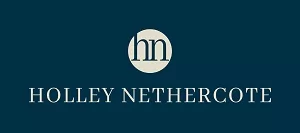In Part I of this blog series, we addressed the following questions:
- What is an accountant's certificate?>
- What is the distinction between wholesale and retail clients?
- When is it permissible to treat an SMSF client as wholesale?
We left off at What are the wholesale client eligibility tests? In Part II of this blog series, we will continue from there and answer the remaining questions:
- What are the wholesale client eligibility tests?
- What is individual wealth?
- How are controlled entities included?
- Who can control an SMSF?
4. What are the wholesale client eligibility tests?
The legislation creates 5 classes of eligibility to be a
wholesale client. Only one of these classes, the individual wealth
tests, requires certification by accountants.
The individual wealth tests are frequently used by financial
advisers as they are relatively straightforward tests and the
adviser can rely on the certification provided by the accountant.
While many SMSFs will have the necessary level of assets or income
within the fund, the "controlled entity" rules also offer
scope to include assets or income additional to those of the
SMSF.
As noted above, it is crucial in this regard to keep in mind that individual trustees must be considered as a joint entity and not as the sum of their individual circumstances. Therefore, it is only assets or income that the individual trustees jointly own that can be counted towards the individual wealth tests.
For example, a husband and wife who were individual trustees of an SMSF could also include the value of the family home if they owned it jointly. Similarly, if they were joint trustees of a family trust. However, if the wife owned an investment property in her own name, then this could not be included.
5. What is individual wealth?
The individual wealth tests require a person to have either:
- net assets of at least $2.5 million; or
- gross income for each of the last 2 financial years of at least $250,000, as certified by an accountant.
The accountant's certificate lasts for 2 years before requiring renewal. There is no particular form specified for the certificate. However, ASIC issued a template certificate in 2006, which is available here.
6. How are controlled entities included?
The individual wealth tests have an extended operation in relation to controlled entities such that:
- In determining the net assets or gross income of a person, the net assets or gross income of a company or trust controlled by that person can be included. This has obvious application in relation to an SMSF given that such funds are established as trusts.
- If a person is eligible to be a wholesale client (under any of the eligibility tests),then a company or trust controlled by that person is also a wholesale client, even if they do not otherwise qualify.
Control is defined as the capacity of one entity to determine the outcome of decisions about another entity's financial and operating policies. It is possible that more than one person or entity may meet the legal meaning of control in relation to a subject entity at the one time.
7. Who can control an SMSF?
The trustee(s) of an SMSF legally own (and, therefore, clearly control) the assets of the SMSF, which means that the income and assets of the fund can be included for the purposes of whether the trustee(s) themselves meet the individual wealth test.
However, can an SMSF also be controlled by a person other than the trustee(s)? If so, and that person is themselves a wholesale client, then the trustee(s) of the SMSF will also be a wholesale client (as trustee(s) of a controlled trust).
Due to the nature of the superannuation rules, it is unlikely that such control could be shown other than in limited circumstances. For example, an individual trustee of an SMSF would be unlikely to control the SMSF as there must always be another individual trustee of the SMSF. As the individual trustees must act unanimously, none of them would have individual control of the SMSF (they would always require the other trustees to agree to any course of action that was proposed in relation to the SMSF).
A similar lack of control would exist between the multiple directors of the corporate trustee of an SMSF. However, it is possible to have a single director trustee company and a single member SMSF with a corporate trustee that had that member as sole director and shareholder being controlled by the member.
Also, keep in mind that control can exist outside of the recognised legal structures to encompass the "puppet-master" situation where an individual exerts influence behind the scenes. By its nature, it can be difficult for a third party, such as an accountant, to identify whether such a situation exists in practice. An interesting example can be found in the AAT decision in Gutteridge v CoT [2013] AATA 947.
If you have any questions about accountant's certificates, setting up an SMSF, or just general enquiries, please feel free to contact David Court, head of our superannuation team, for a free 30 minute consultation.
This blog series was first featured as an article in the September / October 2017 edition of the SMSF Adviser magazine, and published on the SMSF Adviser website.
The content of this article is intended to provide a general guide to the subject matter. Specialist advice should be sought about your specific circumstances.


